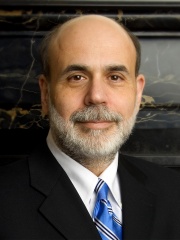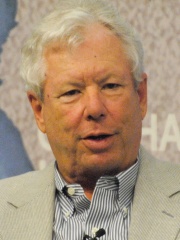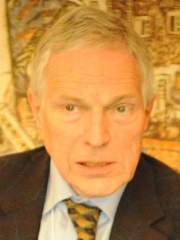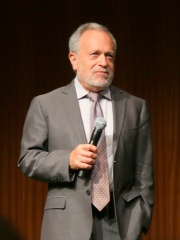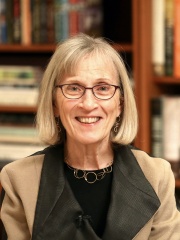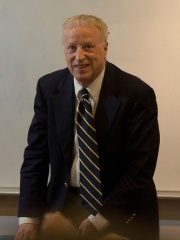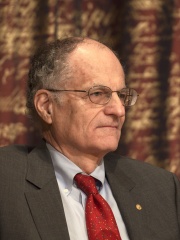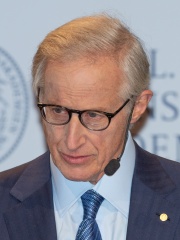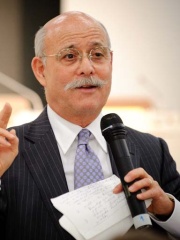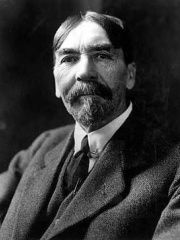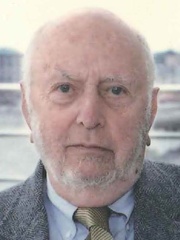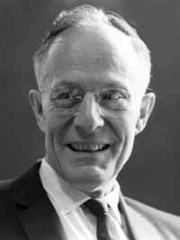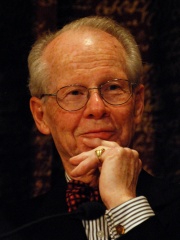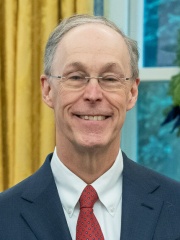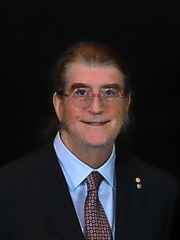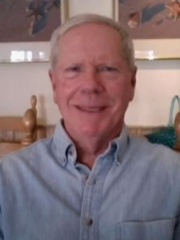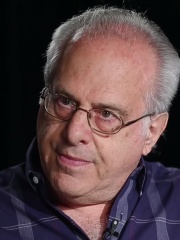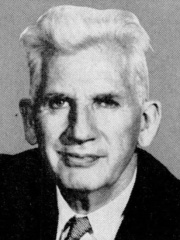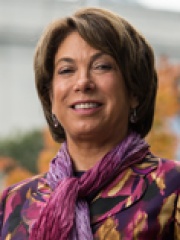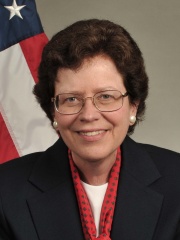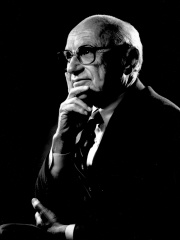
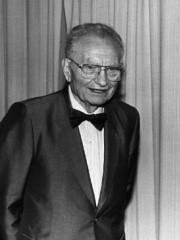
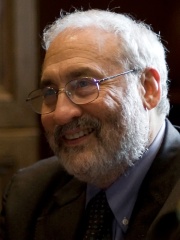
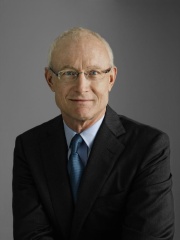
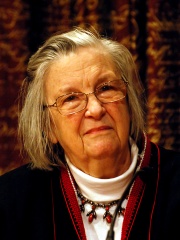
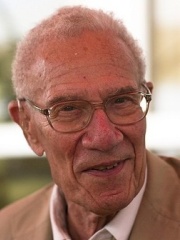
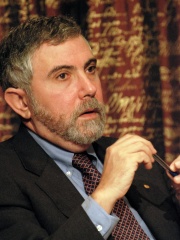

The Most Famous
ECONOMISTS from United States
This page contains a list of the greatest American Economists. The pantheon dataset contains 414 Economists, 122 of which were born in United States. This makes United States the birth place of the most number of Economists.
Top 10
The following people are considered by Pantheon to be the top 10 most legendary American Economists of all time. This list of famous American Economists is sorted by HPI (Historical Popularity Index), a metric that aggregates information on a biography’s online popularity. Visit the rankings page to view the entire list of American Economists.

1. Milton Friedman (1912 - 2006)
With an HPI of 74.33, Milton Friedman is the most famous American Economist. His biography has been translated into 95 different languages on wikipedia.
Milton Friedman ( ; July 31, 1912 – November 16, 2006) was an American economist and statistician who received the 1976 Nobel Memorial Prize in Economic Sciences for his research on consumption analysis, monetary history and theory and the complexity of stabilization policy. With George Stigler, Friedman was among the intellectual leaders of the Chicago school of economics, a neoclassical school of economic thought associated with the work of the faculty at the University of Chicago that rejected Keynesianism in favor of monetarism until the mid-1970s, when it turned to new classical macroeconomics heavily based on the concept of rational expectations. Several students, young professors and academics who were recruited or mentored by Friedman at Chicago went on to become leading economists, including Gary Becker, Robert Fogel, and Robert Lucas Jr. Friedman's challenges to what he called "naive Keynesian theory" began with his interpretation of consumption, which tracks how consumers spend. He introduced a theory which would later become part of mainstream economics and among the first to propagate the theory of consumption smoothing. During the 1960s, he became the main advocate opposing Keynesian government policies, and described his approach (along with mainstream economics) as using "Keynesian language and apparatus" yet rejecting its initial conclusions. He theorized that there existed a natural rate of unemployment and argued that unemployment below this rate would cause inflation to accelerate. He argued that the Phillips curve was in the long run vertical at the "natural rate" and predicted what would come to be known as stagflation. Friedman promoted a macroeconomic viewpoint known as monetarism and argued that a steady, small expansion of the money supply was the preferred policy, as compared to rapid, and unexpected changes. His ideas concerning monetary policy, taxation, privatization, and deregulation influenced government policies, especially during the 1980s. His monetary theory influenced the Federal Reserve's monetary policy in response to the global financial crisis of 2007–2008. After retiring from the University of Chicago in 1977, and becoming Emeritus professor in economics in 1983, Friedman served as an advisor to Republican U.S. president Ronald Reagan and Conservative British prime minister Margaret Thatcher. His political philosophy extolled the virtues of a free market economic system with minimal government intervention in social matters. He once stated that his role in eliminating conscription in the United States was his proudest achievement. In his 1962 book Capitalism and Freedom, Friedman advocated policies such as a volunteer military, freely floating exchange rates, abolition of medical licenses, a negative income tax, school vouchers, and opposition to the war on drugs and support for drug liberalization policies. His support for school choice led him to found the Friedman Foundation for Educational Choice, later renamed EdChoice. Friedman's works cover a broad range of economic topics and public policy issues. His books and essays have had global influence, including in former communist states. A 2011 survey of economists commissioned by the EJW ranked Friedman as the second-most popular economist of the 20th century, following only John Maynard Keynes. Upon his death, The Economist described him as "the most influential economist of the second half of the 20th century ... possibly of all of it".

2. Paul Samuelson (1915 - 2009)
With an HPI of 69.36, Paul Samuelson is the 2nd most famous American Economist. His biography has been translated into 78 different languages.
Paul Anthony Samuelson (May 15, 1915 – December 13, 2009) was an American economist who was the first American to win the Nobel Memorial Prize in Economic Sciences. When awarding the prize in 1970, the Swedish Royal Academies stated that he "has done more than any other contemporary economist to raise the level of scientific analysis in economic theory". Samuelson was one of the most influential economists of the latter half of the 20th century. In 1996, when he was awarded the National Medal of Science. Samuelson considered mathematics to be the "natural language" for economists and contributed significantly to the mathematical foundations of economics with his book Foundations of Economic Analysis. He was author of the best-selling economics textbook of all time: Economics: An Introductory Analysis, first published in 1948. It was the second American textbook that attempted to explain the principles of Keynesian economics. Samuelson served as an advisor to President John F. Kennedy and President Lyndon B. Johnson, and was a consultant to the United States Treasury, the Bureau of the Budget and the President's Council of Economic Advisers. Samuelson wrote a weekly column for Newsweek magazine along with Chicago School economist Milton Friedman, where they represented opposing sides: Samuelson, as a self described "Cafeteria Keynesian", claimed taking the Keynesian perspective but only accepting what he felt was good in it. By contrast, Friedman represented the monetarist perspective. Together with Henry Wallich, their 1967 columns earned the magazine a Gerald Loeb Special Award in 1968.

3. Joseph Stiglitz (b. 1943)
With an HPI of 68.55, Joseph Stiglitz is the 3rd most famous American Economist. His biography has been translated into 67 different languages.
Joseph Eugene Stiglitz (; born February 9, 1943) is an American New Keynesian economist, a public policy analyst, and a full professor at Columbia University. He is a recipient of the Nobel Memorial Prize in Economic Sciences (2001) and the John Bates Clark Medal (1979). He is a former senior vice president and chief economist of the World Bank. He is also a former member and chairman of the (US president's) Council of Economic Advisers. He is known for his support for the Georgist public finance theory and for his critical view of the management of globalization, of laissez-faire economists (whom he calls "free-market fundamentalists"), and of international institutions such as the International Monetary Fund and the World Bank. In 2000, Stiglitz founded the Initiative for Policy Dialogue (IPD), a think tank on international development based at Columbia University. He has been a member of the Columbia faculty since 2001, and received the university's highest academic rank (university professor) in 2003. He was the founding chair of the university's Committee on Global Thought. He also chairs the University of Manchester's Brooks World Poverty Institute. He was a member of the Pontifical Academy of Social Sciences. In 2009, the President of the United Nations General Assembly Miguel d'Escoto Brockmann, appointed Stiglitz as the chairman of the U.N. Commission on Reforms of the International Monetary and Financial System, where he oversaw suggested proposals and commissioned a report on reforming the international monetary and financial system. He served as the chair of the international Commission on the Measurement of Economic Performance and Social Progress, appointed by the French President Sarkozy, which issued its report in 2010, Mismeasuring our Lives: Why GDP doesn't add up, and currently serves as co-chair of its successor, the High Level Expert Group on the Measurement of Economic Performance and Social Progress. From 2011 to 2014, Stiglitz was the president of the International Economic Association (IEA). He presided over the organization of the IEA triennial world congress held near the Dead Sea in Jordan in June 2014. In 2011, Stiglitz was named as one of the 100 most influential people in the world by the Time magazine. Stiglitz's work focuses on income distribution from a Georgist perspective, asset risk management, corporate governance, and international trade. He is the author of several books, the latest being People, Power, and Profits (2019), The Euro: How a Common Currency Threatens the Future of Europe (2016), The Great Divide: Unequal Societies and What We Can Do About Them (2015), Rewriting the Rules of the American Economy: An Agenda for Growth and Shared Prosperity (2015), and Creating a Learning Society: A New Approach to Growth Development and Social Progress (2014). He is also one of the 25 leading figures on the Information and Democracy Commission launched by Reporters Without Borders. According to the Open Syllabus Project, Stiglitz is the fifth most frequently cited author on college syllabi for economics courses.

4. Michael Porter (b. 1947)
With an HPI of 67.59, Michael Porter is the 4th most famous American Economist. His biography has been translated into 35 different languages.
Michael Eugene Porter (born May 23, 1947) is an American academic known for his theories on economics, business strategy, and social causes. He is the Bishop William Lawrence University Professor at Harvard Business School, and was one of the founders of the consulting firm The Monitor Group (now part of Deloitte) and FSG, a social impact consultancy. He is credited for creating Porter's five forces analysis, which is instrumental in business strategy development at present. He is generally regarded as the father of the modern strategy field. He is also regarded as one of the world's most influential thinkers on management and competitiveness as well as one of the most influential business strategists. His work has been recognized by governments, non governmental organizations and universities.
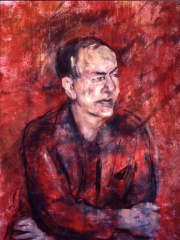
5. Herbert A. Simon (1916 - 2001)
With an HPI of 67.55, Herbert A. Simon is the 5th most famous American Economist. His biography has been translated into 60 different languages.
Herbert Alexander Simon (June 15, 1916 – February 9, 2001) was an American political scientist whose work also influenced the fields of computer science, economics, and cognitive psychology. His primary research interest was decision-making within organizations and he is best known for the theories of "bounded rationality" and "satisficing". He received the Nobel Memorial Prize in Economic Sciences in 1978 and the Turing Award in computer science in 1975. His research was noted for its interdisciplinary nature, spanning the fields of cognitive science, computer science, public administration, management, and political science. He was at Carnegie Mellon University for most of his career, from 1949 to 2001, where he helped found the Carnegie Mellon School of Computer Science, one of the first such departments in the world. Notably, Simon was among the pioneers of several modern-day scientific domains such as artificial intelligence, information processing, decision-making, problem-solving, organization theory, and complex systems. He was among the earliest to analyze the architecture of complexity and to propose a preferential attachment mechanism to explain power law distributions.

6. Elinor Ostrom (1933 - 2012)
With an HPI of 67.38, Elinor Ostrom is the 6th most famous American Economist. Her biography has been translated into 78 different languages.
Elinor Claire "Lin" Ostrom (née Awan; August 7, 1933 – June 12, 2012) was an American political scientist and political economist whose work was associated with New Institutional Economics and the resurgence of political economy. In 2009, she was awarded the Nobel Memorial Prize in Economic Sciences for her "analysis of economic governance, especially the commons", which she shared with Oliver E. Williamson; she was the first woman to win the prize. After graduating with a B.A. and Ph.D. in political science from UCLA, Ostrom lived in Bloomington, Indiana, and served on the faculty of Indiana University, with a late-career affiliation with Arizona State University. She was a Distinguished Professor at Indiana University and the Arthur F. Bentley Professor of Political Science and co-director of the Workshop in Political Theory and Policy Analysis at Indiana University, as well as research professor and the founding director of the Center for the Study of Institutional Diversity at Arizona State University in Tempe. She was a lead researcher for the Sustainable Agriculture and Natural Resource Management Collaborative Research Support Program (SANREM CRSP), managed by Virginia Tech and funded by USAID. Beginning in 2008, she and her husband Vincent Ostrom advised the journal Transnational Corporations Review. Since the 60s, Ostrom was involved in resource management policy and created a research center, which attracted scientists from different disciplines from around the world. Working and teaching at her center was created on the principle of a workshop, rather than a university with lectures and a strict hierarchy. Ostrom studied the interaction of people and ecosystems for many years and showed that the use of exhaustible resources by groups of people (communities, cooperatives, trusts, trade unions) can be rational and prevent depletion of the resource without either state intervention or markets with private property.

7. Robert Solow (1924 - 2023)
With an HPI of 65.81, Robert Solow is the 7th most famous American Economist. His biography has been translated into 54 different languages.
Robert Merton Solow, GCIH (; August 23, 1924 – December 21, 2023) was an American economist and Nobel laureate whose work on the theory of economic growth culminated in the exogenous growth model named after him. He was Institute Professor Emeritus of Economics at the Massachusetts Institute of Technology, where he was a professor from 1949 on. He was awarded the John Bates Clark Medal in 1961, the Nobel Memorial Prize in Economic Sciences in 1987, and the Presidential Medal of Freedom in 2014. Four of his PhD students, George Akerlof, Joseph Stiglitz, Peter Diamond, and William Nordhaus, later received Nobel Memorial Prizes in Economic Sciences in their own right. while an undergraduate student of Solow, H. Robert Horvitz, won in medicine.

8. Paul Krugman (b. 1953)
With an HPI of 65.36, Paul Krugman is the 8th most famous American Economist. His biography has been translated into 75 different languages.
Paul Robin Krugman ( KRUUG-mən; born February 28, 1953) is an American economist who is the Distinguished Professor of Economics at the Graduate Center of the City University of New York and a columnist for The New York Times. In 2008, Krugman was the sole winner of the Nobel Memorial Prize in Economic Sciences for his contributions to new trade theory and new economic geography. The Prize Committee cited Krugman's work explaining the patterns of international trade and the geographic distribution of economic activity, by examining the effects of economies of scale and of consumer preferences for diverse goods and services. Krugman was previously a professor of economics at MIT, and, later, at Princeton University. He retired from Princeton in June 2015, and holds the title of professor emeritus there. He also holds the title of Centennial Professor at the London School of Economics. Krugman was President of the Eastern Economic Association in 2010, and is among the most influential economists in the world. He is known in academia for his work on international economics (including trade theory and international finance), economic geography, liquidity traps, and currency crises. Krugman is the author or editor of 27 books, including scholarly works, textbooks, and books for a more general audience, and has published over 200 scholarly articles in professional journals and edited volumes. He has also written several hundred columns on economic and political issues for The New York Times, Fortune and Slate. A 2011 survey of economics professors named him their favorite living economist under the age of 60. According to the Open Syllabus Project, Krugman is the second most frequently cited author on college syllabi for economics courses. As a commentator, Krugman has written on a wide range of economic issues including income distribution, taxation, macroeconomics, and international economics. Krugman considers himself a modern liberal, referring to his books, his blog on The New York Times, and his 2007 book The Conscience of a Liberal. His popular commentary has attracted widespread praise and criticism.

9. Gary Becker (1930 - 2014)
With an HPI of 65.08, Gary Becker is the 9th most famous American Economist. His biography has been translated into 59 different languages.
Gary Stanley Becker (; December 2, 1930 – May 3, 2014) was an American economist who received the 1992 Nobel Memorial Prize in Economic Sciences. He was a professor of economics and sociology at the University of Chicago, and was a leader of the third generation of the Chicago school of economics. Becker was awarded the Nobel Memorial Prize in Economic Sciences in 1992 and received the United States Presidential Medal of Freedom in 2007. A 2011 survey of economics professors named Becker their favorite living economist over the age of 60, followed by Kenneth Arrow and Robert Solow. Economist Justin Wolfers called him "the most important social scientist in the past 50 years." Becker was one of the first economists to analyze topics that had been researched in sociology, including racial discrimination, crime, family organization, and rational addiction. He argued that many different types of human behavior can be seen as rational and utility-maximizing, including those that are often regarded as self-destructive or irrational. His approach also extended to altruistic aspects of human behavior, which he showed to sometimes have self-serving ends (when individuals' utility is properly defined and measured, that is). He was also among the foremost exponents of the study of human capital. According to Milton Friedman, he was "the greatest social scientist who has lived and worked" in the second part of the twentieth century.
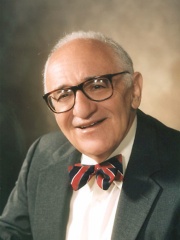
10. Murray Rothbard (1926 - 1995)
With an HPI of 64.70, Murray Rothbard is the 10th most famous American Economist. His biography has been translated into 42 different languages.
Murray Newton Rothbard (; March 2, 1926 – January 7, 1995) was an American economist of the Austrian School, economic historian, political theorist, and activist. Rothbard was a central figure in the 20th-century American libertarian movement, particularly its right-wing strands, and was a founder and leading theoretician of anarcho-capitalism. He wrote over twenty books on political theory, history, economics, and other subjects. Rothbard argued that all services provided by the "monopoly system of the corporate state" could be provided more efficiently by the private sector and wrote that the state is "the organization of robbery systematized and writ large". He called fractional-reserve banking a form of fraud and opposed central banking. He categorically opposed all military, political, and economic interventionism in the affairs of other nations. Rothbard led a "fringe existence" in academia, as described by his protégé Hans-Hermann Hoppe. Rothbard rejected mainstream economic methodologies and instead embraced the praxeology of Ludwig von Mises. Rothbard taught economics at a Wall Street division of New York University, later at Brooklyn Polytechnic, and after 1986 in an endowed position at the University of Nevada, Las Vegas. Partnering with the oil billionaire Charles Koch, Rothbard was a founder of the Cato Institute and the Center for Libertarian Studies in the 1970s. He broke with Koch and joined Lew Rockwell and Burton Blumert in 1982 to establish the Mises Institute in Alabama. Rothbard opposed egalitarianism and the civil rights movement, and blamed women's voting and activism for the growth of the welfare state. He promoted historical revisionism and befriended the Holocaust denier Harry Elmer Barnes. Later in his career, Rothbard advocated a libertarian alliance with paleoconservatism (which he called paleolibertarianism), favoring right-wing populism and describing David Duke and Joseph McCarthy as models for political strategy. In the 2010s, he received renewed attention as an influence on the alt-right.
People
Pantheon has 132 people classified as American economists born between 1793 and 1970. Of these 132, 67 (50.76%) of them are still alive today. The most famous living American economists include Joseph Stiglitz, Michael Porter, and Paul Krugman. The most famous deceased American economists include Milton Friedman, Paul Samuelson, and Herbert A. Simon. As of April 2024, 9 new American economists have been added to Pantheon including Douglas Diamond, Philip H. Dybvig, and David Landes.
Living American Economists
Go to all RankingsJoseph Stiglitz
1943 - Present
HPI: 68.55
Michael Porter
1947 - Present
HPI: 67.59
Paul Krugman
1953 - Present
HPI: 65.36
Ben Bernanke
1953 - Present
HPI: 63.11
Richard Thaler
1945 - Present
HPI: 61.98
Edmund Phelps
1933 - Present
HPI: 61.93
Robert Reich
1946 - Present
HPI: 61.28
Claudia Goldin
1946 - Present
HPI: 61.19
George Akerlof
1940 - Present
HPI: 61.08
Thomas J. Sargent
1943 - Present
HPI: 60.03
William Nordhaus
1941 - Present
HPI: 60.01
Jeremy Rifkin
1945 - Present
HPI: 59.70
Deceased American Economists
Go to all RankingsMilton Friedman
1912 - 2006
HPI: 74.33
Paul Samuelson
1915 - 2009
HPI: 69.36
Herbert A. Simon
1916 - 2001
HPI: 67.55
Elinor Ostrom
1933 - 2012
HPI: 67.38
Robert Solow
1924 - 2023
HPI: 65.81
Gary Becker
1930 - 2014
HPI: 65.08
Murray Rothbard
1926 - 1995
HPI: 64.70
Thorstein Veblen
1857 - 1929
HPI: 64.46
Douglass North
1920 - 2015
HPI: 64.06
Theodore Schultz
1902 - 1998
HPI: 63.60
Oliver E. Williamson
1932 - 2020
HPI: 63.57
Irving Fisher
1867 - 1947
HPI: 63.40
Newly Added American Economists (2024)
Go to all RankingsDouglas Diamond
1953 - Present
HPI: 54.35
Philip H. Dybvig
1955 - Present
HPI: 52.04
David Landes
1924 - 2013
HPI: 48.17
Don Patinkin
1922 - 1995
HPI: 45.38
Paul Craig Roberts
1939 - Present
HPI: 43.87
Richard D. Wolff
1942 - Present
HPI: 42.52
Paul Douglas
1892 - 1976
HPI: 39.04
Laura Tyson
1947 - Present
HPI: 36.06
Rebecca Blank
1955 - 2023
HPI: 34.29
Overlapping Lives
Which Economists were alive at the same time? This visualization shows the lifespans of the 25 most globally memorable Economists since 1700.

